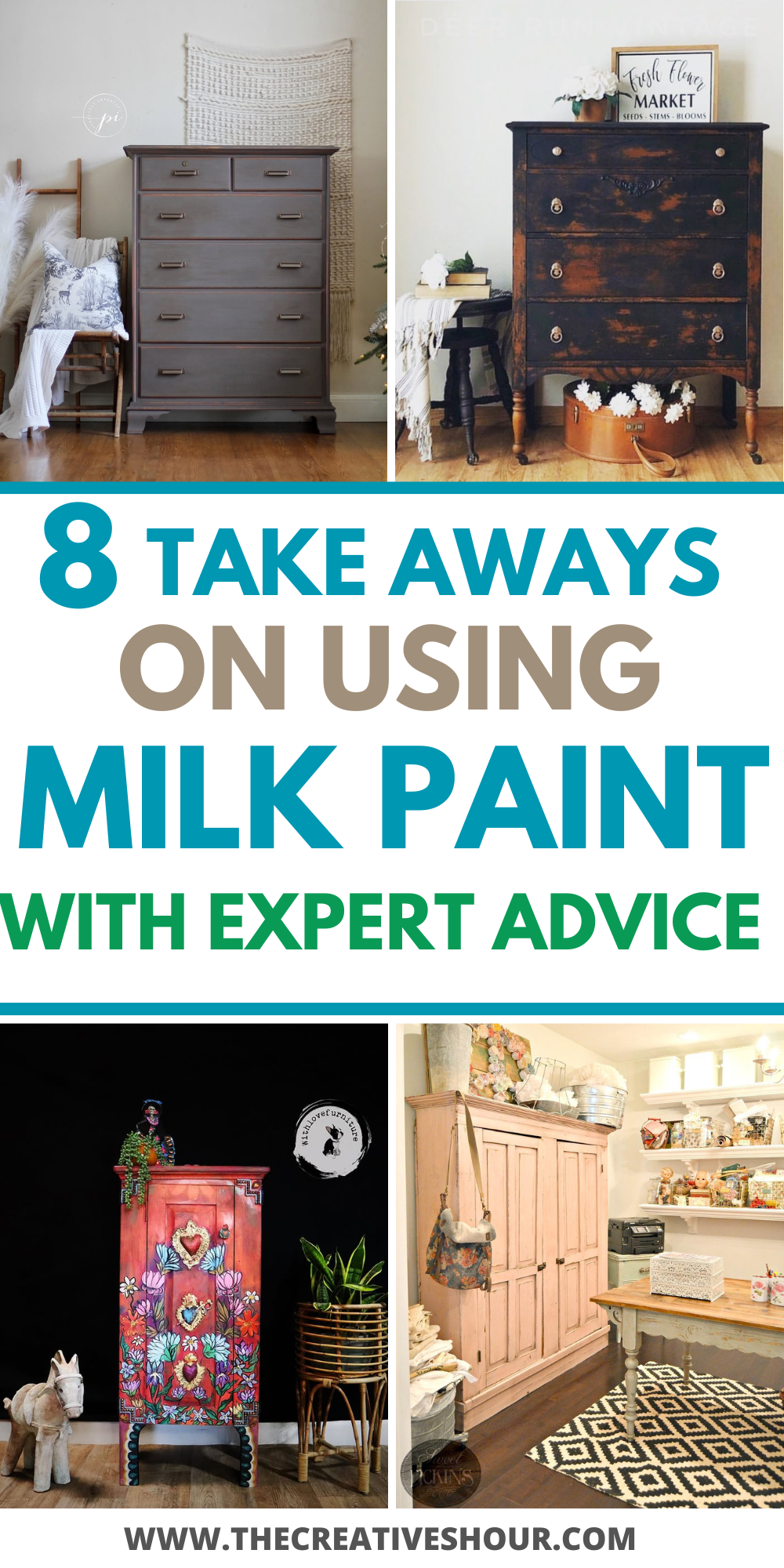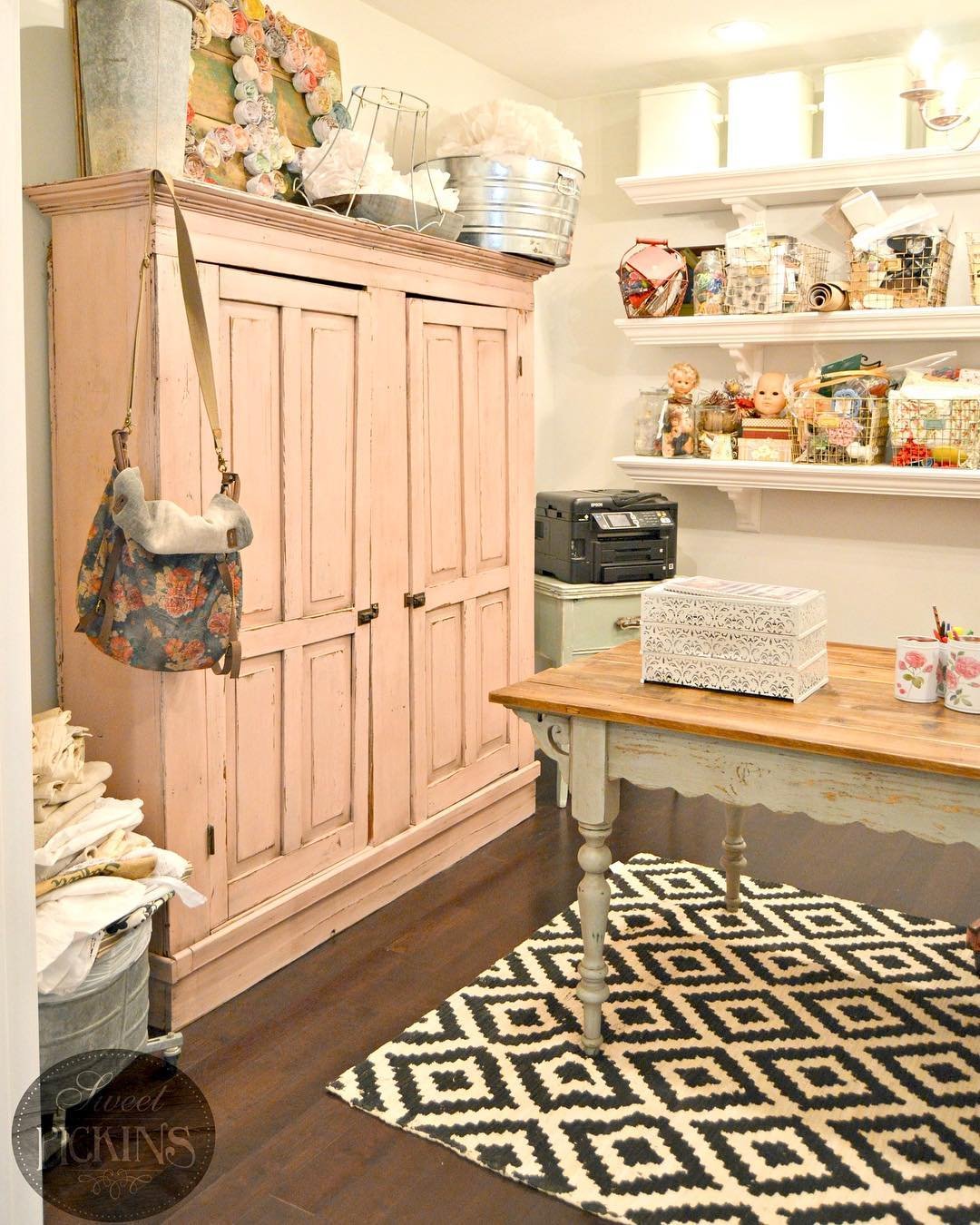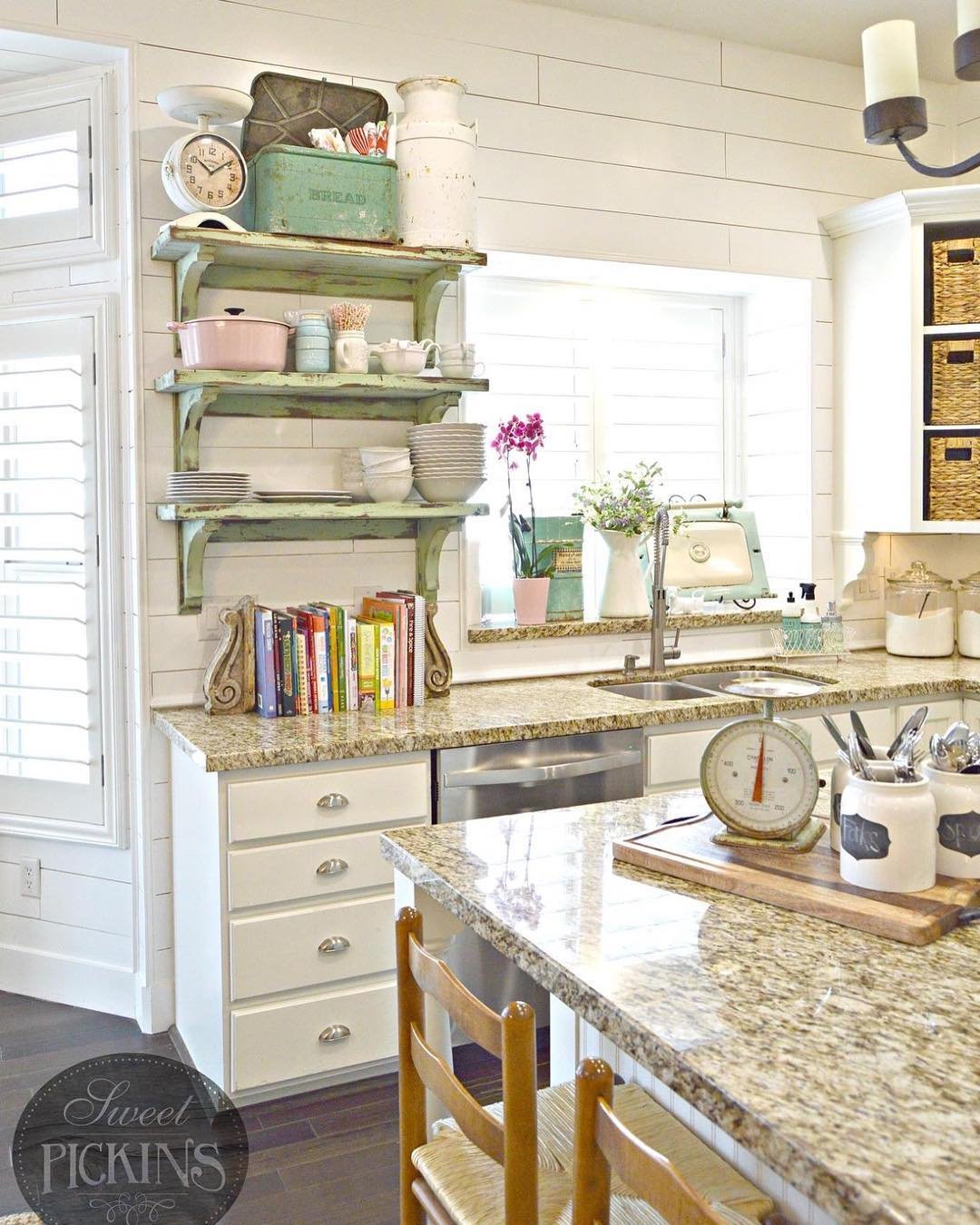
Milk paint has been making waves in the world of eco-friendly and nontoxic coatings, offering a natural, breathable finish that enhances wood, metal, and even historic restorations. But how does it perform in real-world projects? We asked industry experts to share their hands-on experiences—detailing their application process, challenges faced, and key lessons learned.
From reviving vintage furniture to refreshing office shelving and restoring log cabin beams, here’s what eight thought leaders have discovered about working with milk paint.
Related articles –
- 25 Cool DIY Faux Fireplace Ideas That Won’t Cost A Bomb
- 25 Playful And Luxe Barbiecore Home Aesthetic Ideas
- 20 Super Elegant And Vibrant Easter Porch Decor Ideas For You
What Is A Milk Paint And How Is It useful?
What Is Milk Paint and How Is It Useful?
Milk paint is a natural, water-based paint made from simple ingredients like casein (milk protein), lime, clay, and natural pigments. It has been used for centuries to create beautiful, breathable finishes on furniture, walls, and other surfaces. Unlike conventional paints, milk paint contains no harsh chemicals, VOCs (volatile organic compounds), or synthetic additives, making it an eco-friendly and non-toxic choice.

Image by perfectlyimperfectfurnitureres
How Is Milk Paint Useful?
- Eco-Friendly & Non-Toxic – Made from natural ingredients, milk paint is free from harmful chemicals, making it safe for indoor use, children’s furniture, and homes with pets.
- Authentic Vintage & Rustic Look – It naturally creates a distressed, antique, or matte finish, making it ideal for farmhouse-style furniture, reclaimed wood, and restoration projects.
- Excellent Adhesion – Milk paint bonds well to porous surfaces like raw wood without needing a primer. A bonding agent can be added to help it stick to non-porous materials like metal or previously finished wood.
- Highly Customizable – Since it comes in powder form, you can mix it to your preferred consistency and color intensity. It can be layered, thinned for a wash effect, or thickened for a more opaque look.
- Durability & Breathability – When sealed properly, milk paint is long-lasting and resists chipping while allowing surfaces to breathe, making it great for historic restorations and moisture-prone environments.
- Quick Drying & Easy Cleanup – It dries faster than many conventional paints, and since it’s water-based, cleaning up requires just soap and water.
1. Milk Paint Enhances Antique Look on Wood
“Milk paint is one of the best choices for an antique or distressed look. I used it on a reclaimed wood dining table, and the results were exactly what I hoped for. The application was simple, no need for a primer since the wood was raw and unfinished.
The first coat soaked in quickly, leaving a light, washed-out effect. After a second coat, the color deepened, but the wood grain still showed through. That’s the beauty of milk paint. It enhances texture rather than covering it completely.
What I’m getting at is that milk paint can be unpredictable. The way it absorbs varies depending on the wood, and without proper mixing, you can get uneven color. Adding a bonding agent can help if you want a more controlled finish, but I skipped it to let the paint naturally chip and wear over time.
A light sanding in certain areas helped give it a naturally aged effect. Sealing with an oil finish brought out richness in the color while keeping it breathable. If someone is after a clean, modern look, milk paint isn’t the best option, but for a rustic or vintage style, it’s hard to beat.” – Nathan Mathews, CEO and Founder, Roofer

Image by flippedbyabby
2. Milk Paint Refreshes Office Shelving
“In our office, we used milk paint to refresh some wooden shelving and give the space a more natural, non-toxic finish. Since we work with electrical installations, we wanted a coating that did not release harmful fumes, especially in a workspace where people spend long hours. Milk paint was the perfect option because it is made from natural ingredients and does not have the strong chemical smell that comes with traditional paints.
The application process started with preparing the wood. The shelves had a previous finish, so we had to sand them down to ensure the paint adhered properly. Unlike conventional paints, milk paint comes in powder form and needs to be mixed with water.
Getting the consistency right took some trial and error, as too much water made it thin and uneven, while too little made it difficult to spread. We applied multiple thin layers instead of one thick coat, allowing each layer to dry before adding the next. This helped us achieve that smooth, even color without streaks or patches.
However, the challenge was durability. Milk paint on its own has a matte, chalky finish, which looks great but is prone to wear. To protect the surface, we sealed the shelves with a natural wax, which deepened the color and added a layer of protection against moisture and dust. The final result gave the shelves a clean, rustic look while keeping the air in the office free from harsh chemicals.
The project was a success, and since then, we have considered using milk paint in other areas where a safe, eco-friendly finish is needed.” – Daniel Vasilevski, Director & Owner, Bright Force Electrical

Image by sweetpickins
3. Milk Paint for Historic Home Restoration
“I worked on a historic home restoration where the client wanted a completely non-toxic, eco-friendly finish for the timber surfaces. Milk paint was a perfect fit because it’s made from casein, lime, and earth pigments, which align with the project’s sustainability goals. The challenge was getting the right consistency and adhesion, especially on previously painted surfaces.
To prep, we sanded down the old layers and applied a bonding agent to help the milk paint stick. We mixed it fresh for each coat and used a damp brush technique to minimize streaks. The result was a rich, matte finish with a slightly textured look that enhanced the wood’s character.
If you are using milk paint, test it on a sample piece first. It behaves differently on raw wood versus finished surfaces. Proper prep and layering are key to getting an even, durable coat without excessive chipping.” – Adam Bushell, Director, AB Electrical & Communications

Image by sweetpickins
4. Milk Paint on Outdoor Benches
“Milk paint is one of those materials that surprises people with how well it holds up. I used it on a set of outdoor wooden benches that had been sitting in a shed for years. The prep was simple—just a quick sanding to remove dirt and some old varnish.
Since milk paint comes in powder form, mixing took a bit of trial and error. The goal was a consistency thick enough for coverage but thin enough to soak into the wood grain. Two coats later, the finish looked solid, with a deep, matte color that gave the wood a refreshed but aged look.
Honestly, the biggest challenge was its quick drying time. If you don’t work fast, streaks and uneven patches can form. The key is applying smooth, consistent strokes and mixing enough paint in one batch to cover an entire section. Unlike regular paints, milk paint doesn’t always need a topcoat, but I sealed the benches with a hemp oil finish to help with water resistance. Six months in, the color still looks great, and there’s no chipping or peeling.” – Caleb John, Director, Exceed Plumbing

Image by sweetpickins
5. Milk Paint for Reclaimed Wood Furniture Line
“Using milk paint for a reclaimed wood furniture line was a successful step toward offering a fully non-toxic and biodegradable product. The application process involved mixing the powdered paint with water for a smooth, even consistency.
Two thin coats were applied, allowing the wood’s natural grain to show through while achieving a durable, matte finish. A natural oil sealant was added for protection. One challenge was the quick drying time, which required efficient brushwork to avoid streaks.
However, testing on scrap pieces helped refine the technique. The results were impressive—customer demand for the milk-painted collection increased by 46% within four months, and feedback highlighted the appeal of its chemical-free composition and vintage aesthetic.
For those considering milk paint, proper surface prep is key—sanding and a bonding agent help on non-porous surfaces. This project proved that sustainable coatings can be both functional and beautiful, attracting eco-conscious customers without compromising on durability.” – Swayam Doshi, Founder, Suspire

Image by mmsmilkpaint
6. Milk Paint on Metal Garden Chairs
“Believe it or not, milk paint works beautifully on metal, too. I used it on a set of iron garden chairs that had rusted over time. First, I sanded off loose rust and applied a bonding agent to help the paint adhere. Without a primer, milk paint can flake off metal surfaces, so that step was necessary. Mixing the paint was straightforward, but it thickens quickly, so working in small batches helped keep the consistency smooth. The first coat looked patchy, but after a second layer, the coverage evened out, leaving a rich, chalky finish.
On top of that, sealing the paint was a must. Unlike synthetic coatings, milk paint is porous, meaning moisture can still get through. I used a clear, eco-friendly wax sealant to protect against rust, and the results have been great. After a year outside in all kinds of weather, the finish hasn’t faded or chipped. For anyone looking to use milk paint on metal, adhesion and sealing are the two biggest factors. Skip either, and you’ll end up repainting much sooner than expected.” – Barbara Robinson, Marketing Manager, Weather Solve

Image by antiquehadden
7. Milk Paint on Log Cabin Beams
“With over three decades in construction and hands-on project management, I have worked on projects that explore sustainable and natural coating alternatives.
I took on a renovation project for a custom log cabin where I used milk paint on reclaimed wood beams and cabinetry. I started with a thorough sanding process to ensure a smooth surface. I mixed the milk paint following a traditional recipe and applied two thin coats, allowing roughly 12.3 hours between applications.
One challenge I encountered was uneven absorption on weathered wood surfaces. I adjusted the mix slightly by adding an extra 2.7% water to improve consistency without compromising the pigment intensity. The result was a matte finish that enhanced the natural wood grain and provided a non-toxic alternative to conventional paints.
Feedback from the client indicated a 9.2% improvement in visual appeal over previous chemical coatings used in similar projects. This experience emphasized the importance of meticulous surface preparation and precise mixture adjustments to achieve a durable, eco-friendly finish.” – Daniel Roberts, Chief Executive Officer, Lava Roofing

Image by adkinsacres
8. Milk Paint Restores Vintage Furniture
“I worked on a local project where we used milk paint to restore some vintage furniture. The challenge was ensuring the paint adhered properly to old, porous wood. I used a natural bonding agent first, which helped, but I also had to be patient with the curing process, as milk paint takes longer to dry than typical paint.
The outcome was beautiful; it had a unique, matte finish that blended so well with the rustic aesthetic of the home. My advice to others? Test it on a small area first to gauge how the paint reacts with different surfaces. It’s a great product, but it requires a bit of extra care.” – Bennett Barrier, Chief Executive Officer, DFW Turf Solutions

Image by withlovefurniture

If you love these ideas, don’t forget to pin the above image to your “Home and Garden” board.

